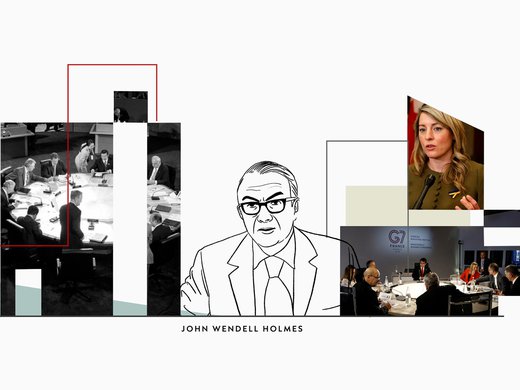In the lead up to and during the opening day speeches of 150 heads of state at COP21 in Paris, there were appeals for urgent and decisive action to combat climate change and exhortations for states to achieve a strong and legally binding agreement.
At the same time there was a cross current of discussion about how a binding agreement with binding targets would never be accepted by key states, especially the US and China. In an announcement, possibly aimed at lowering the temperature on Canadians’ bubbling expectations while lending support to a US President beset by Republican opposition, Canadian Minister of the Environment and Climate Change Catherine McKenna is reported to have said, "Everyone wants to see the United States be part of this treaty. There are political realities in the United States ... they cannot have legally binding targets. We don't expect that the targets will be internationally legally binding."
So what is really going on? Is international law being made in those makeshift negotiating rooms of the “blue zone” or is it being avoided? The Paris Draft Agreement released on December 5, with the approval of 195 participating states, makes plain that the challenge for negotiators is to bind all parties in an agreement that is gentle enough for the major states, includes enough sweeteners for developing states, and is strong enough to engender significant climate action by all. It may surprise no one that despite international law’s theory of sovereign equality of all nations, when it comes to reaching a negotiated agreement about climate change commitments, some are definitely “more equal” than others. US academic Dan Bodansky explains that, regardless of the aspirations of other nations, the sweet spot for a successful Paris climate agreement will be one that the US President can ratify without having to seek congressional approval.
There are several ways for the US to enter into international agreements, the most well-known being to use Article II of the US Constitution, which requires the President to obtain the advice and consent of two-thirds of the Senate. No one expects that to be feasible because of the climate change denying positions of Republicans. It appears this is not the only way for the US to join a treaty, however. US practice has developed, explains Bodansky, such that most international treaties are made through other means, such as congressional-executive agreements where approval is given by both houses of Congress (again likely not feasible for a strong climate change treaty), and presidential-executive agreements, where it is solely the President who approves the treaty.
It is this latter avenue that offers the potential for the US to sign a Paris climate agreement with legal force, without having to submit it to Senate or Congress for approval. According to Bodansky, in certain limited circumstances, such as if the treaty was procedurally oriented without precise legally binding emissions limits or financial commitments, the US President “would be on relatively firm legal ground” to exercise executive authority to accept the agreement. Because of the uncertainty about the extent of this authority, the President’s decision will be based on his informed assessment of the political acceptability of that course of action. US negotiators, supported by those who want to conclude a binding and universal treaty, are trying to corral this uncertainty by designing a treaty that sets a framework for climate action through nationally determined commitments, capacity building, burden sharing, cooperation and financial incentives, technology transfer, and periodic review to nudge states closer to the global goal of keeping temperature rise below 2 degrees Celsius.
Realpolitik dictates that the Paris Agreement should be more procedural than substantive, with the substantive details to be worked out nationally through voluntary commitments, such as those already made by the US, China and India, and progressive action by all nations to attain and exceed their commitments.
Developing countries quite reasonably insist that, in order to earn their assent to a relatively soft agreement, global equity issues must be addressed with cash, technology transfer and capacity building. Sweeteners that spread the opportunity for development of a global green economy by investing in clean energy sources in the developing world help to address climate change equity issues and will contribute significantly to attaining the Sustainable Development Goals. These goals have become a kind of binding agent in the negotiations and have given new life to the word Solidarité, as developed countries pledge financial and technical assistance to developing countries as part of their climate commitments, and multilateral development banks leverage private sector financing to multiply their capacity to invest in building low carbon economies.
Prime Minister Trudeau’s announcement, on the eve of the COP21, of $2.65 Billion to assist in capacity building in the developing world is a case in point. Negotiators in Paris are working to bind all nations together in multiple legal and voluntary ways to create the global solidarity required to address the crisis of climate change.


